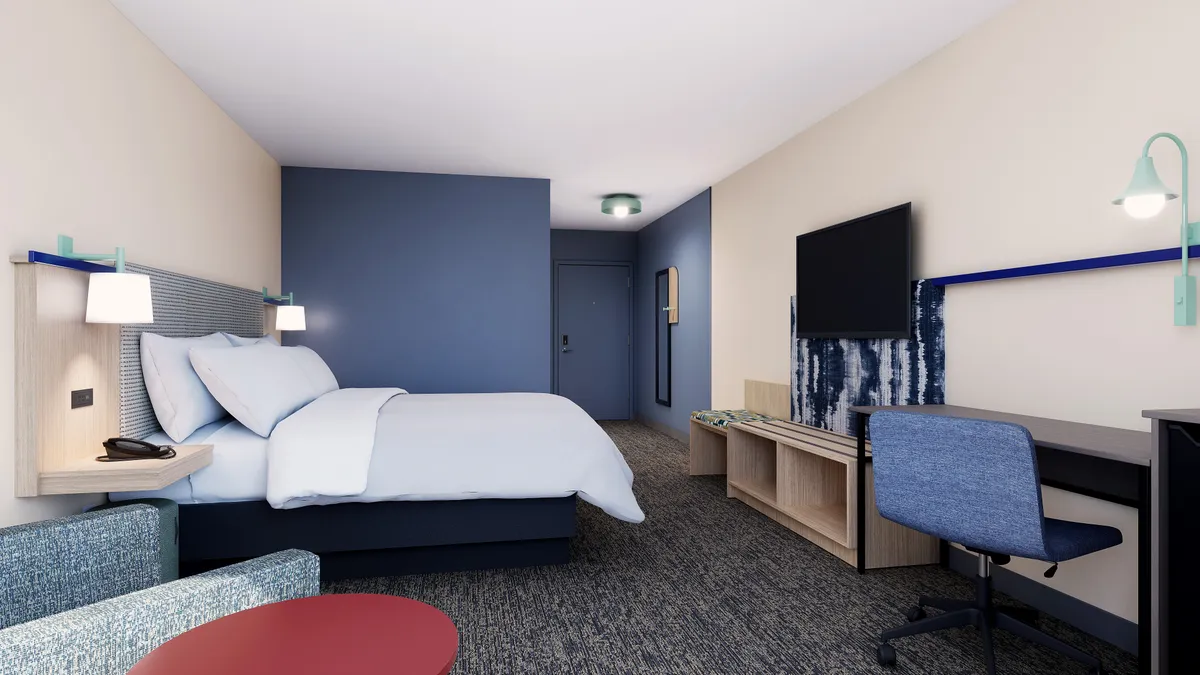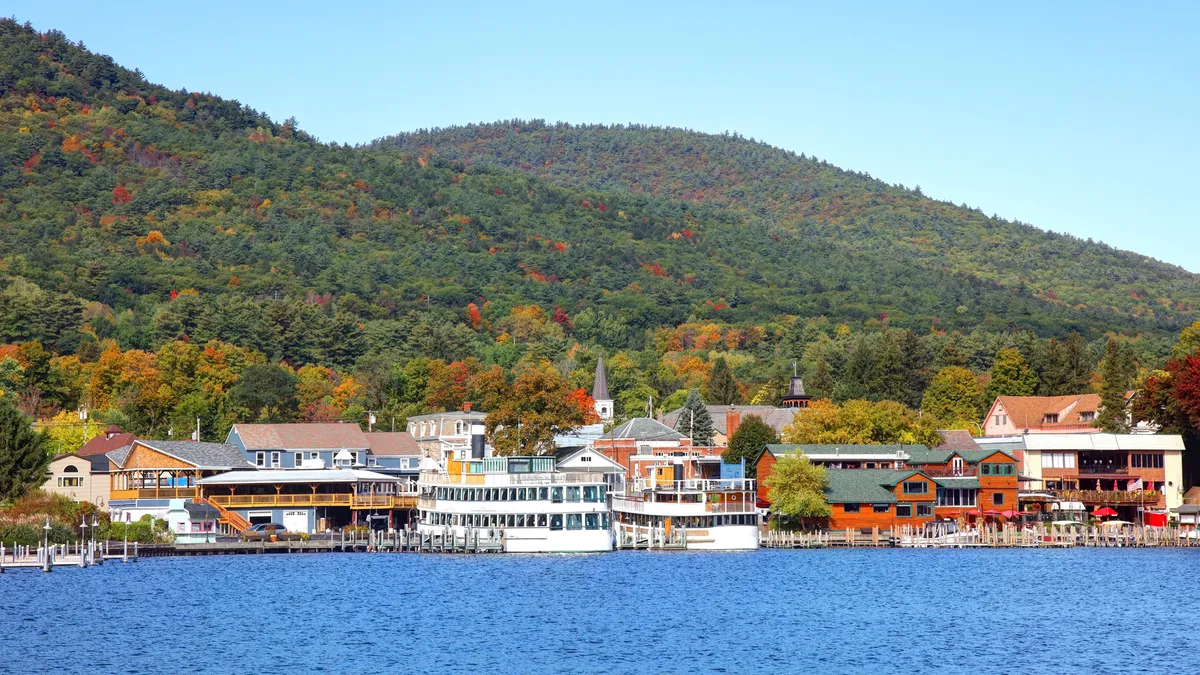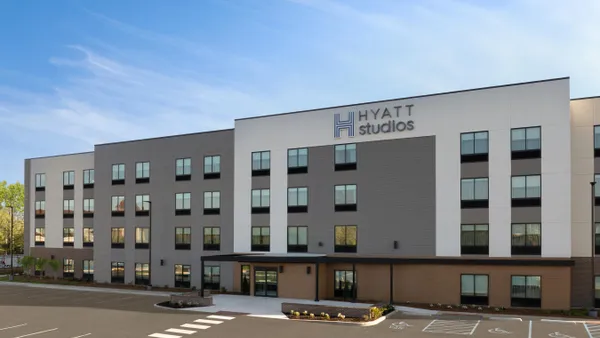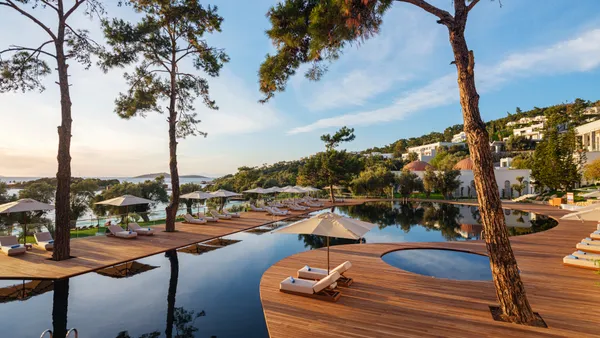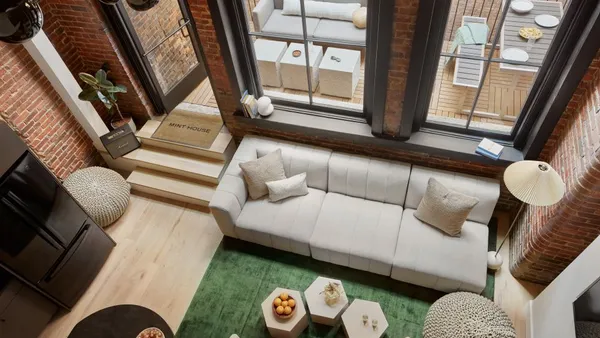As hotel owners and developers face tightening lending markets and other macroeconomic challenges, hotel conversion has become a more desirable option to grow or enhance their portfolios — especially compared to new construction.
For owners, converting an existing hotel from its independent status, or affiliating it with a new brand, can mean heightened revenue for owners. For brands, conversion can be a more cost- and time-effective development option than new construction.
These factors — plus macroeconomic headwinds — have grown the hotel conversion pipeline to “historic levels,” Lodging Econometrics SVP Bruce Ford told Hotel Dive. And while upscale, upper midscale and economy brands make up most of that pipeline, midscale brands have recently begun to get in on the action, too.
A growing pipeline
According to Lodging Econometrics’ Q2 2023 U.S. Construction Pipeline Trend Report, announced renovations and brand conversions, combined, reached record high project counts year over year, accounting for 1,939 projects, or 253,473 rooms.
Upscale, upper midscale and economy brands accounted for the majority of conversion projects in the pipeline at the end of 2023’s second quarter, the report found.
However, Choice Hotels International says its midscale conversion brands Clarion Pointe and Quality Inn have seen significant growth this year, and IHG Hotels & Resorts recently launched a midscale conversion brand, signaling strength in the segment.
Tom Nee, Choice’s SVP of foundation development, told Hotel Dive that Choice has seen significant growth in conversion development, pointing specifically to the Clarion Pointe and Quality Inn brands, which have 50 and 80 hotels in the pipeline, respectively.
At the end of this year’s second quarter, Choice’s global rooms pipeline for conversion hotels increased by 14% year over year and 25% quarter over quarter, while the domestic rooms pipeline for conversion hotels was up 10% year over year and 28% quarter over quarter.
“Right now, because the lending environment can be challenging, conversion projects at Choice are surpassing new construction projects,” Nee said.
IHG has similarly seen increased growth in its conversion pipeline. Nearly 40% of the company’s openings in the first half of this year were via conversion, Kevin Schramm, SVP of development at IHG, told Hotel Dive.
Last month, IHG launched the midscale conversion brand Garner, designed to provide guests with an affordable hotel option and owners with higher returns.
Schramm described the brand as “a curated collection of properties that are going to be unique in their own design but consistent in terms of the quality of their finishes and the value proposition at each hotel.”
Garner was developed based on direct feedback and insight from owners who were seeking access to IHG’s global sales organization, as well as low-cost distribution systems and lower procurement costs. At launch, the brand had already received more than 100 definitive expressions of interest, “which demonstrates the strong potential in the [midscale] segment,” IHG CEO Elie Maalouf said in a statement.
Driving demand
Across brands, the speed of opening, cost savings and increased revenue are factors driving owners and developers to conversion, Nee said.
“The exceptional speed with which we are able to move conversion projects through the pipeline — sometimes as fast as 100 days — has driven impressive revenue-intense hotel openings in the first half of 2023,” Nee said.
When a developer signs a new construction hotel project, Ford explained, it will typically take three to four years before that hotel joins a franchise company and begins to generate fees. A conversion hotel, on the other hand, can often sign and be operating under the brand within six months.
For Choice, 65% of the 126 franchise agreements awarded for conversion hotels in the first half of 2023 have already opened or are expected to open by year-end.
Compared to new construction projects, Nee said, conversions also offer cost savings due to several factors, including the ability to determine project costs more easily. He said pricing on hotel conversions is “established in real-time, reducing the risk of budget overruns.”
Inflation and rising interest rates associated with new construction often lead to higher development costs than initially projected, causing “unexpected equity injections and altering return expectations for investors,” Nee added. Additionally, conversions don’t require construction loans, which can be expensive in the current environment.
“Conversion projects tend to be more stable investments in the present economy, as they are less susceptible to cost overruns due to supply chain issues, inflation or bureaucratic hurdles,” Nee said. “This is further reinforced by the fact that conversion brands prioritize traveler-focused brand hallmarks while accommodating owner flexibility, making them attractive and economically sound choices.”
Increased revenues can also be expected from conversion hotels because the name recognition and resources a leading brand can provide an owner help drive RevPAR, Nee noted.
Schramm agreed that conversions present owners the opportunity to benefit from a brand of scale, especially at a time when “travelers are looking for more out of their hotels and are seeking a higher level of quality and consistency.”
“[Owners] are seeing the value of their asset, and while from a finish level or a location standpoint [the property] may be every bit as good as an IHG hotel, the owners are not realizing the benefits that come with being an IHG hotel, namely the strength of our commercial delivery and the breadth of our IHG One Rewards program,” Schramm said, noting that benefits like this ultimately attract and retain more guests, driving higher revenue for owners.
Future outlook
Despite the current unprecedented demand and activity in the hotel conversion space — which Ford predicts will last through 2025 — new construction projects across all chain scales still outpace the number of conversion and renovation projects in the pipeline.
According to Lodging Econometrics, as of this year’s second quarter, there were 5,572 new construction hotel projects, or 660,061 rooms, in the total U.S. pipeline — nearly three times the number of conversion projects in the pipeline.
With that in mind, Choice is committed to maintaining a substantial presence in new construction projects, Nee said. Choice is particularly focused on forwarding new construction projects for its upscale and extended stay brands.
So far this year, Choice’s WoodSpring Suites extended stay brand has seen significant growth, even breaking a brand record in May with the opening of six hotels in one month. There are some 300 total WoodSpring Suites hotels in Choice’s pipeline.
Other hotels have expanded their extended stay pipelines as well. In June, Marriott launched a midscale extended stay brand, later named StudioRes, and is in discussions with owners for more than 250 development opportunities under the brand. And in July, Wyndham Hotels & Resorts added 60 hotels to its Echo Suites pipeline.



